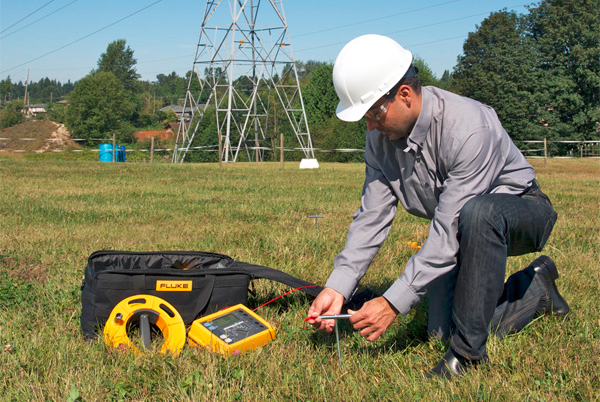
The earthing resistance measurement results can seriously be affected by the 50 Hz or 60 Hz overhead power transmission lines. Most of the measuring instrumentation has the power sources generating a signal with the power of below 0.1 W. Cheap hardware has a capacity of not to exceed 10-20 milliamperes with the voltage of 20–50 V transmitted into the soil. The return signal often does not exceed one milliampere, this is why 50 Hz or 60 Hz power transmission lines located near suppress it easily. It is the problem which the manufacturers of a cheap hardware seek to avoid, when using the alternating current signal with the frequency of 94 Hz, 105 Hz, 111 Hz and 128 Hz. More information on how to measure the earthing resistance you may find in our article.
We should note, that the earthing resistance measurement methodology using alternating current has a low accuracy. For dozens of years the researchers have prescribed the methodology for the resistance measurement by using a direct-current (0 Hz) instrumentation, as well as the induced (excited) polarization methodology. For example, back in 1915 Frank Wenner wrote on the need for direct current using, he developed the four-electrode soil resistivity measurement methodology, which today is named after him. However, in his studies Wenner was also constrained by the use of alternating current. The scientist just had no other way: the excited polarization technologies for the direct current signal processing did not exist at that time. At the same time Wenner had a clear understanding that alternating current seems to be less effective for the earthing resistance measurement.
An instrument is required for the accurate earthing resistance measurements, to use not only direct current and the excited polarization, but which is capable also to generate the voltage of several hundreds of Volts and the power of hundreds of Watts. Normally such a hardware is supplied from a small movable generator. In practice, there are only two manufacturers on the today's market providing the required instruments — Iris Instruments France and AGI, USA.
The most of companies offer alternating current-based instrumentation for the earthing resistance measurement. The measurement accuracy of it is low since these are cheap and easier in the operation. Sometimes a product description may include the wording like "generating the direct-current pulse signal". Sad but true, it is a pure marketing. In fact the hardware mentioned above uses the rectangular wave alternating current signal.

